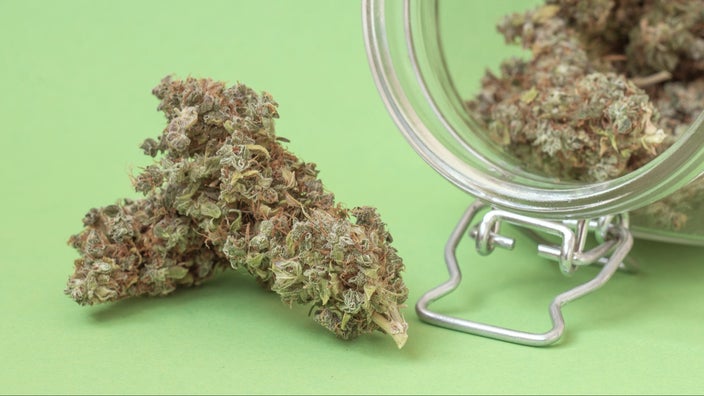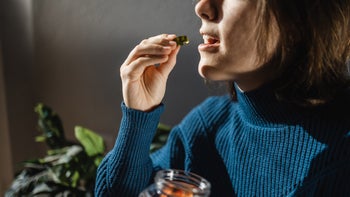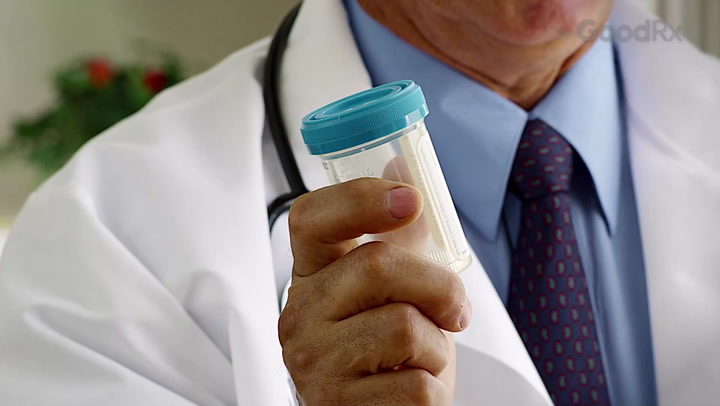
Cannabis Is More Potent Than Ever — Here’s Why That Can Be Risky
Key takeaways:
THC is the main mind-altering chemical in cannabis that makes you feel “high.” High-potency cannabis products contain large amounts of THC
High potency is not the same as high quality. As THC content goes up, you miss out on the benefits of other active ingredients.
Consuming large amounts of THC can have both short- and long-term negative effects. It may even make your body numb to THC over time.

Although humans have been using cannabis for at least 5,000 years, today’s cannabis is very different from ancient varieties. A key difference is THC, marijuana’s main mind-altering chemical. The amount of THC in cannabis has steadily increased over the last few decades.
But more THC isn’t always a good thing. Stronger cannabis products carry more health risks — and few benefits.
What is high-potency weed?
High-potency weed is cannabis that contains more than 20% THC or 10 mg or more of THC per serving. And the amount of THC in a cannabis product is typically how the product’s strength (or potency) is described.
Wise use cannabis for pain
THC gummies made for quick relief. Clinician-led guidance always included. Use code TRYEO to get 10% off.


Must be 21 years or older to purchase. Cannabis is not recommended for women who are pregnant or nursing or those who are suffering from bipolar disorder or schizophrenia. Cannabis use may increase risk of falls. Always consult with your doctor before beginning any new medical treatment.
Keep in mind, there’s a wide range for what’s considered "high-potency" cannabis. Some cannabis products can have a potency of 95% THC or more. These are generally referred to as cannabis concentrates — and their use is increasing.
Why has the potency of marijuana increased over the years?
Across the globe, the potency of cannabis has risen over the last several decades. From 1995 to 2017, cannabis flower potency increased from about 4% THC to about 17% THC.
Part of this is simply a side effect of prohibition. When a substance is illegal, people prefer strong drugs over weaker ones. Economists call this the potency effect of prohibition.
High-potency THC products also tend to sell for more money. This gives growers and manufacturers a financial incentive to make more potent products.
Unfortunately, cannabis testing labs can also make more money by reporting high THC values. This kind of fraud, called potency inflation, may have artificially increased the data on weed strength in recent years. Several states are trying to address this issue by creating new laws for cannabis testing labs.
High potency isn’t the same as high quality
Studies show that cannabis consumers are willing to pay more money for what they perceive as “high-quality” cannabis products. But there’s no scientific evidence to support the idea that high potency is the same as high quality.
Read more like this
Explore these related articles, suggested for readers like you.
Most high-potency cannabis products increase the amounts of THC at the expense of other active ingredients. As THC goes up, levels of other cannabinoids (like CBD) and terpenes (essential oils found in cannabis) go down. This is especially true for concentrates.
But why does this matter? Because these other active ingredients also have effects on the body. They contribute to the overall effect of cannabis — known as the entourage effect. CBD, in particular, may help reduce some of the negative side effects of THC. So consuming high doses of THC without CBD increases the risk of these side effects.
Also, consuming more THC doesn’t mean you’ll feel more “high.” A clinical study showed that people who took high-potency cannabis felt the same effect as people who took low-potency cannabis. Even though the blood levels of THC in the high-potency group were higher, they didn’t feel more intoxicated.
Health risks of high-potency cannabis
In addition to missing out on some of the entourage benefits of lower-potency cannabis, there are some very real health risks that come with consuming high-potency cannabis.
Addiction and dependency-related risks
When you consume high doses of THC, the brain and body develop tolerance. This means you’ll need to use more cannabis to achieve the desired effect. And consuming high amounts of THC regularly can also make you numb to its effects. Using lower-potency products, or taking regular cannabis breaks for at least 2 days, can help prevent this.
Increased use can lead to physical dependence. This occurs when a person has withdrawal symptoms after they stop using cannabis. Cannabis withdrawal is like caffeine withdrawal, with symptoms such as:
Irritability and negative mood
Difficulty sleeping
Headaches
Cannabis cravings
Tolerance and withdrawal symptoms are both red flags that a person may be developing Cannabis Use Disorder (CUD). Symptoms of CUD include:
Difficulty controlling cannabis use
Continued use, despite negative consequences in one’s life
Continued use, despite negative health consequences
Using cannabis in risky situations, such as driving
Spending an excessive amount of time acquiring, using, and recovering from cannabis use
Using high-potency cannabis may increase the chances of experiencing these symptoms.
Physical health risks
The following unwanted side effects are much more likely to happen when using high-potency cannabis:
Poor body coordination
Difficulty thinking or concentrating
Rapid heart beat
Anxiety, fear, or panic
Confusion or disturbing thoughts
Cannabinoid Hyperemesis Syndrome (CHS) is another possible side effect of high-potency cannabis use. We need more research to draw a clear link between high-potency cannabis and CHS. But it’s clear that too much THC can lead to the uncontrollable nausea and vomiting associated with this disorder.
High-potency cannabis may also cause seizures. People who use cannabis concentrates appear to be the most at risk for seizures, even if they are otherwise healthy.
Cannabis-related deaths are very rare, and most deaths are due to fatal accidents. However, there are several case reports of people who had fatal heart complications after using cannabis. THC has also been linked with other heart problems, including heart attacks.
Mental health risks
High-potency cannabis products are also linked with poor mental health outcomes. A high dose of THC may cause psychotic-like symptoms in an estimated 35% to 50% of people. And regular use of high-potency cannabis makes people five times more likely to develop psychosis.
Psychosis is a potentially life-threatening mental health emergency where a person experiences:
Hallucinations — seeing, hearing, or perceiving things that aren’t there
Delusions — unusual beliefs that do not match shared reality
Confused or disturbed thoughts
In some cases, a high dose of THC can trigger a specific condition called Cannabis-Induced Psychotic Disorder. This condition is very different from simply consuming excess THC. Some of these differences include:
Psychotic symptoms are more severe.
People believe their hallucinations are real.
Symptoms last much longer than the normal duration of THC’s effects — sometimes still being experienced days or even weeks after cannabis exposure.
Benefits of high-potency cannabis
There are a couple possible benefits to opting for high-potency cannabis, including:
High-potency cannabis may allow you to save money. While high-potency products are often more expensive, you don’t need to use as much of them to get an effect. So they may last longer and be more cost-effective in the long run.
High-potency cannabis may be a better choice for certain people. Some people metabolize cannabis very rapidly. They need very high doses to feel its effects. Also, some people with severe pain may need high doses of THC to treat their symptoms. For these people, high-potency cannabis may be the only kind that provides the effect they need.
How to consume THC responsibly
One best practice is to limit how much THC you consume in order to avoid the increased risks associated with high-potency cannabis.
Mindful cannabis use
There are several ways to minimize the risk of negative effects from cannabis, such as:
Choosing a high-CBD formulation. CBD does not cause people to feel high, is not habit-forming, and may have several medical benefits. It may also help prevent some of the negative effects of THC when they’re used together.
Starting with a small dose of THC and increasing your dose slowly over time. The goal here is to find the lowest effective dose for your needs. Increasing your dose slowly over time allows your body to adjust to small changes. This reduces the risk of side effects.
Buy cannabis from regulated sources
Unlike illicit market cannabis, most legalized cannabis markets require lab testing and labeling. Purchasing from a legal state retailer ensures you’ll know exactly how much THC is in each product. Buying cannabis from a licensed retailer is safer than informal sources. Many states also permit people to grow their own cannabis and get it tested at state-licensed laboratories.
It can be challenging to find dispensary products that are low in THC. This can be frustrating for people who prefer low-potency products.
Some things to look for when shopping for low-potency products include:
Flower with less than 10% THC
“Balanced” products with a 1 to 1 ratio of THC to CBD
CBD-dominant flower, edibles, or tinctures
Products marketed as a “microdose” of THC
If your dispensary doesn’t carry many low-THC options, it might be helpful to have a conversation with dispensary management. Consumer demand is a powerful force — cannabis retailers will generally only carry products they know will sell.
The bottom line
High-potency cannabis is becoming more popular than ever. But consuming large amounts of THC comes with serious health risks — and limited benefits. Choosing low-potency or balanced cannabis products can limit these risks. It’s also important to purchase cannabis from regulated dispensaries, so you know exactly what you’re consuming.
Why trust our experts?



If you or someone you know struggles with substance use, help is available. Call SAMHSA’s National Helpline at 1-800-662-HELP (4357) to learn about resources in your area.
Keep in mind that cannabis is legal in some states for recreational and/or medicinal use, but not in others. Cannabis is still illegal under federal law. Before you use cannabis products, find out the laws in your state.
References
Adams, B. (2022). Potency inflation runs rampant in cannabis industry despite measures to combat it.
Barrus, D. G., et al. (2016). Tasty THC: Promises and challenges of cannabis edibles. Methods Report.
Bidwell, L. C., et al. (2020). Association of naturalistic administration of cannabis flower and concentrates with intoxication and impairment. JAMA Psychiatry.
Bidwell, L. C., et al. (2021). Advancing the science on cannabis concentrates and behavioural health. Drug and Alcohol Review.
Black, L. (2021). America’s pot labs have a THC problem. FiveThirtyEight.
Blake, A., et al. (2017). A selective review of medical cannabis in cancer pain management. Annals of Palliative Medicine.
Block, W. (1993). Drug prohibition: A legal and economic analysis. Journal of Business Ethics.
Boehnke, K. F., et al. (2019). Cannabis use preferences and decision-making among a cross-sectional cohort of medical cannabis patients with chronic pain. Journal of Pain.
Bonnet, U., et al. (2017). The cannabis withdrawal syndrome: Current insights. Substance Abuse and Rehabilitation.
California Department of Cannabis Control. (2022). California looks to standardize cannabis testing statewide.
Chandra, S., et al. (2019). New trends in cannabis potency in USA and Europe during the last decade (2008–2017). European Archives of Psychiatry and Clinical Neuroscience.
Chu, F., et al. (2022). Cannabinoid hyperemesis syndrome. StatPearls.
Colino, S. (2022). Marijuana withdrawal: What to expect and how to cope. Forbes Health.
Cox-Georgian, D., et al. (2019). Therapeutic and medicinal uses of terpenes. Medicinal Plants: From Farm to Pharmacy.
Cuttler, C., et al. (2021). Acute effects of high-potency cannabis flower and cannabis concentrates on everyday life memory and decision making. Scientific Reports.
Donnan, J., et al. (2022). Characteristics that influence purchase choice for cannabis products: A systematic review. Journal of Cannabis Research.
ElSohly, M. A., et al. (2016). Changes in cannabis potency over the last two decades (1995-2014) - Analysis of current data in the United States. Biological Psychiatry.
Fischer, B., et al. (2022). Lower-Risk Cannabis Use Guidelines (LRCUG) for reducing health harms from non-medical cannabis use: A comprehensive evidence and recommendations update. International Journal on Drug Policy.
Freeman, T. P., et al. (2021). Changes in delta-9-tetrahydrocannabinol (THC) and cannabidiol (CBD) concentrations in cannabis over time: Systematic review and meta-analysis. Addiction.
Hartung, B., et al. (2014). Sudden unexpected death under acute influence of cannabis. Forensic Science International.
Hryhorowicz, S., et al. (2017). Pharmacogenetics of cannabinoids. European Journal of Drug Metabolism and Pharmacokinetics.
Kaczor, E. E., et al. (2022). The potential proconvulsant effects of cannabis: A scoping review. Journal of Medical Toxicology.
Kahan, M. D., et al. (2021). Seizure and interictal electroencephalographic (EEG) changes with cannabinoid concentrate use. American Journal of Case Reports.
Murray, R. M., et al. (2017). Cannabis-associated psychosis: Neural substrate and clinical impact. Neuropharmacology.
National Institute on Drug Abuse. (2020). Cannabis (marijuana) concentrates DrugFacts.
National Institute on Drug Abuse. (2020). Is there a link between marijuana use and psychiatric disorders?.
Pearson, N. T., et al. (2019). Cannabis and psychosis through the lens of DSM-5. International Journal of Environmental Research and Public Health.
Petrilli, K., et al. (2022). Association of cannabis potency with mental ill health and addiction: A systematic review. Lancet.
Reimann-Philipp, U., et al. (2020). Cannabis chemovar nomenclature misrepresents chemical and genetic diversity; survey of variations in chemical profiles and genetic markers in Nevada medical cannabis samples. Cannabis and Cannabinoid Research.
Rock, K. L., et al. (2022). Can cannabis kill? Characteristics of deaths following cannabis use in England (1998-2020). Journal of Psychopharmacology.
Russo, E. (2006). A tale of two cannabinoids: The therapeutic rationale for combining tetrahydrocannabinol and cannabidiol. Medical Hypotheses.
Russo, E. B. (2011). Taming THC: Potential cannabis synergy and phytocannabinoid-terpenoid entourage effects. British Journal of Pharmacology.
Smart, R., et al. (2017). Variation in cannabis potency and prices in a newly legal market: evidence from 30 million cannabis sales in Washington state. Addiction.
United Kingdom National Health Service. (2019). Symptoms - Psychosis.
Vincent, P. C., et al. (2017). The effects of perceived quality on behavioral economic demand for marijuana: A web-based experiment. Drug and Alcohol Dependence.
Volkow, N. D., et al. (2017). Don’t worry, be happy: Endocannabinoids and cannabis at the intersection of stress and reward. Annual Review of Pharmacology and Toxicology.
Keep in mind that cannabis is legal in some states for personal and/or medicinal use, but not in others. Cannabis is still illegal under federal law.





























